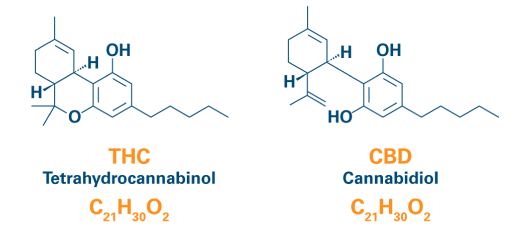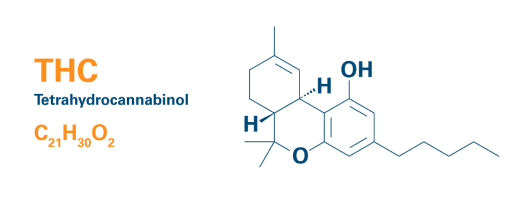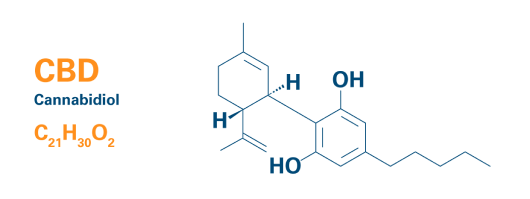WHAT
ABOUT MEDICINAL CANNABIS
If you don’t have any experience with medicinal cannabis, this is a good place to start. Here, you can learn about medicinal cannabis in general, including some basic scientific information.
What is medicinal cannabis?
Cannabis is a plant. When the cannabis plant is mature, it produces an oil containing chemicals called cannabinoids.1 These cannabinoids have a range of medicinal properties. This isn’t unique. In fact, more than 100 approved medicines are derived from a plant.2 This includes some of the world’s most well-known medicines like aspirin (used for the treatment of pain, fever, and inflammation), morphine (pain), digoxin (heart failure), and paclitaxel (cancer). As an example, aspirin is modelled after salicylic acid, a chemical found in several plants, including Salix alba, the white willow tree.3
Just like these plant-derived medicines, the term ‘cannabis-based medicines’ refers to any medicine that is based on cannabinoids extracted from the cannabis plant. Medicinal cannabis, on the other hand, differs from classical medicines and represents a new category of medicinal products. Medicinal cannabis uses cannabis flowers or extracts and makes them available in new pharmaceutical forms and with various concentrations and mixtures of the active substances.
What are the main active substances in medicinal cannabis?
The cannabis plant contains many chemicals, including more than 100 cannabinoids.4 The two most researched and most used cannabinoids are called tetrahydrocannabinol (also known as THC) and cannabidiol (also known as CBD).4 Medicinal cannabis products may contain primarily THC, primarily CBD, or a balance of these two ingredients.5

What are cannabinoids?
Cannabinoids are a group of chemicals produced by the cannabis plant. The cannabis plant contains over 100 cannabinoids.4 The two most researched and most used cannabinoids are tetrahydrocannabinol (also known as THC) and cannabidiol (also known as CBD).4
What is THC?
THC (or tetrahydrocannabinol) is a cannabinoid, a chemical produced by the cannabis plant.6 THC is psychoactive, which means that it affects the brain, and a person’s mental state. In the brain, THC activates a cellular receptor called the cannabinoid receptor.6By doing so, THC can exert a pharmacological activity that can be associated with decreased pain, anxiety, muscular tension, and nausea.7 At higher levels, or depending on the sensitivity of specific patients, THC can produce negative effects like heightened sensory perceptions, altered sense of time, and paranoia. These are the effects associated with an intoxicated feeling.6

What is CBD?
CBD (or cannabidiol) is a cannabinoid, a chemical produced by the cannabis plant. Unlike THC, CBD is not psychoactive.6 This means that it does not affect the brain. In fact, CBD appears to counter some of the negative effects of THC, when they are used together. It has been studied for the treatment of epilepsy, chronic pain, inflammation, anxiety, and insomnia.7

Does the body have natural cannabinoids?
Yes. The human body has molecules called endocannabinoids. They interact with the body’s cannabinoid (CB) receptors, just like cannabinoids that come from the cannabis plant. This natural system, which is still being researched, seems to regulate appetite, sleep, pain sensation, and other physiological functions in the brain. That’s why activating the system with external cannabinoids may have a medicinal effect.8,9
What are the different types of cannabis plants?
Among botanists (plant scientists), there is still no definitive agreement on how to classify the differences in the cannabis plant. Three species were initially proposed: Cannabis sativa, Cannabis indica, and Cannabis ruderalis. Cannabis sativa is the most used form in the West. It is a taller plant that is grown in warmer regions. In contrast, Cannabis indica is a shorter plant that is grown in cooler climates. Cannabis ruderalis is the smallest of the plants, but it grows the quickest. In terms of cannabinoid content, Cannabis ruderalis has the least THC but it can be high in CBD. However, over time, this classification system has been challenged, since all three plant types can inter-cross successfully and produce fertile hybrids, which contradicts the definition of species. When thinking about the medicinal application of the cannabis plant, creating divisions according to the basic plant characteristics (like height) is often vague and pointless. Creating logical divisions according to the chemical profile makes more sense when thinking about medicinal applications.10 This has resulted in three main types: chemovar I (THC dominant), chemovar II (a balance of THC and CBD), and chemovar III (CBD dominant).11
What are the different types of medicinal cannabis products?
There are many medicinal cannabis products available today. Medicinal cannabis is available in three types: chemovar I (THC dominant), chemovar II (a balance of THC and CBD), and chemovar III (CBD dominant.11 They are available in different formulations, such as a dried flower (whole or ground) that is appropriate for inhalation and oral solutions such as oils, capsules, and sublingual sprays. To learn more about each type of product, how it is used, and its unique characteristics, please proceed to the EVIDENCE FOR MEDICINAL CANNABIS section.
Is hemp different from cannabis?
Hemp refers to varieties of the cannabis plant that contain less than 0.2% THC by dry weight.12 So, the only difference between hemp and cannabis is the profile of the cannabinoids that they include, some of which have medicinal features. Hemp products can contain CBD; however, hemp is often used for a variety of non-medicinal products due to the strength of plant fibers. This includes various textiles. Sometimes, the terms hemp and cannabis are used interchangeably, but they are different.
Is marijuana different from cannabis?
Not really. Cannabis is the official term that is accepted worldwide, especially in the scientific community. That is why the active substances in cannabis are called cannabinoids. Marijuana is a term that is primarily used in the United States, and although no one is certain, the term ‘marijuana’ appears to have some origins from Mexico. Because of negative political and social campaigns against cannabis in the early 20th century in the United States, the term ‘marijuana’ has had a negative connotation since then.13